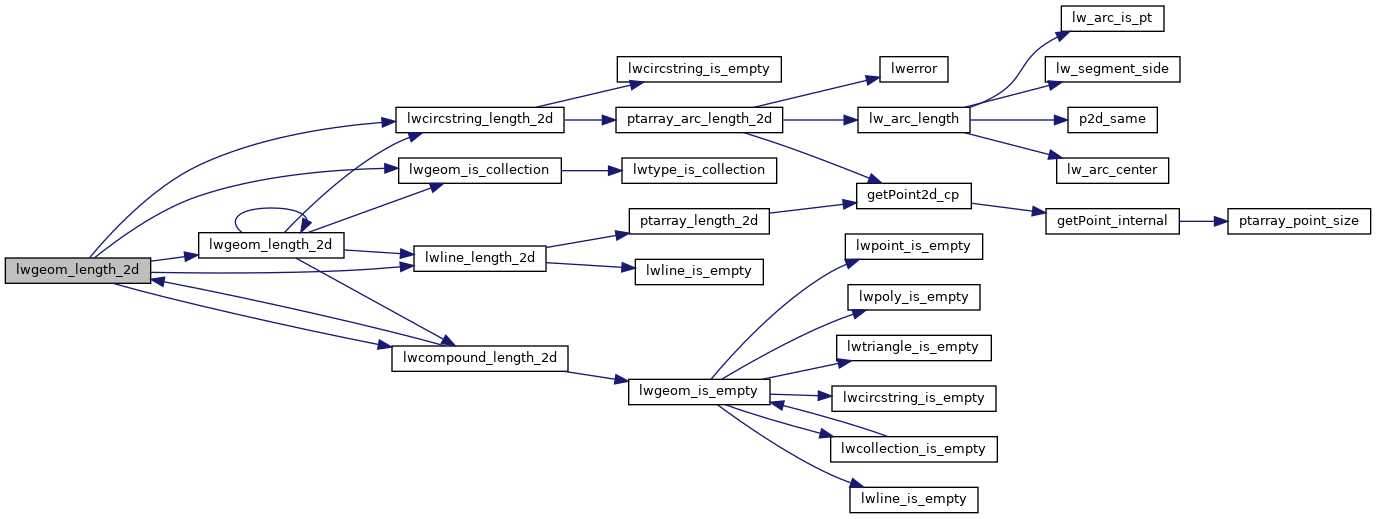Loading...
Searching...
No Matches
◆ lwgeom_length_2d()
|
extern |
Definition at line 2088 of file lwgeom.c.
2089{
2098 {
2099 double length = 0.0;
2100 uint32_t i;
2104 return length;
2105 }
2106 else
2107 return 0.0;
2108}
double lwcircstring_length_2d(const LWCIRCSTRING *circ)
Definition lwcircstring.c:268
int lwgeom_is_collection(const LWGEOM *geom)
Determine whether a LWGEOM contains sub-geometries or not This basically just checks that the struct ...
Definition lwgeom.c:1125
Definition liblwgeom.h:505
Definition liblwgeom.h:573
Definition liblwgeom.h:587
Definition liblwgeom.h:481
References CIRCSTRINGTYPE, COMPOUNDTYPE, CURVEPOLYTYPE, LWCOLLECTION::geoms, LINETYPE, lwcircstring_length_2d(), lwcompound_length_2d(), lwgeom_is_collection(), lwgeom_length_2d(), lwline_length_2d(), LWCOLLECTION::ngeoms, and LWGEOM::type.
Referenced by gserialized_distance_nd(), lwcompound_length_2d(), lwcurvepoly_perimeter_2d(), LWGEOM_length2d_linestring(), and lwgeom_length_2d().
Here is the call graph for this function:

Here is the caller graph for this function:
